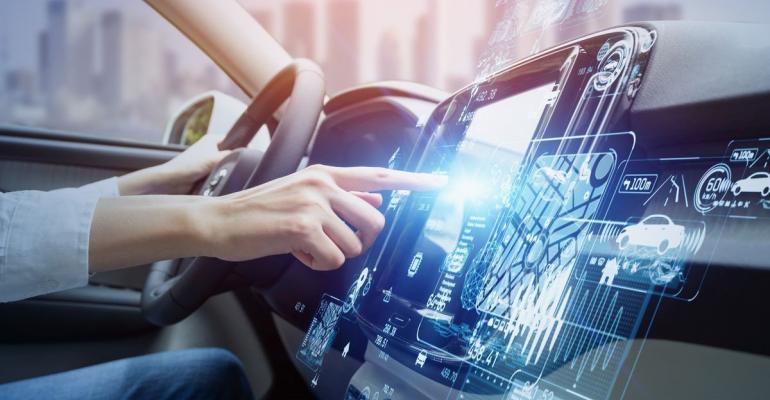It is an old story that keeps repeating itself: Behemoth hardware innovators lose market share, and their customers, when Big Tech comes in.
It happened in mobile. Remember Motorola, who pioneered the mobile phone and then saw its market share shrink from over 57% in 1992 to 2.2% in 2021? How about Nokia, with its digital runway as the first to have a web browser?They went from 42% share in 1992 to 0.6% in 2021.
These are stories of hardware makers that stuck to their hardware rather than pivot to an adaptable platform and, somewhere along the way, they lost the customer relationship. They let nimble software run roughshod over their hardware until they went up in a puff of iPhone smoke.
This is a cautionary tale for automakers. As dashboard-based infotainment display screens dominate more of the vehicle cockpit, and consumer demand for the same levels of immersive, on-demand content that they are used to on their phones and in their homes grows, the need for automakers to give consumers exactly what they have on their other screens is opening a Pandora’s Box of Big Tech disintermediation.
Yes, Big Tech has much of what the consumer wants and most of today’s in-vehicle screens mirror the apps on a consumer mobile device, representing a ready-to-use infotainment solution for the automaker. But giving that much prime real estate to another entity to enable their operating environment runs the risk of disintermediating the critical relationship between car owner and automaker.
Automakers naturally want to provide their customers with an integrated, unified infotainment ecosystem, but building a technology platform from the ground up with the capacity to constantly adapt to a rapidly evolving digital infotainment landscape is a challenge. Yet, if they relinquish the task to Big Tech and a jumble of apps disconnected from the vehicle itself, automakers could lose big opportunities to enrich their relationship with their customer. Is that too high a price to pay?
Vehicle Dashboard of the Future
Let’s paint an aspirational picture of the vehicle dashboard in the cabin of the future and, by that, I mean the next few years. It will follow the owner’s current digital ecosystem in home and mobile, seamlessly continuing the home infotainment experience into the vehicle, able to anticipate the owner/passengers’ needs.
For example, let’s say you are watching The Godfather on your home TV screen but need to head out for an errand; when you enter your vehicle the infotainment system might push The Godfather soundtrack or a podcast discussing the film to you, as it adjusts the seat, steering wheel positioning and interior temperature to your needs. Maybe along the way, an alert on the dash will let you know you need a battery charge, then guide you to the nearest charging station where, while you are charging, The Godfather plays on the infotainment screen from exactly where you left off at home.
That dashboard display, which will offer a multitude of video and audio content enriched with metadata and functionality, also will make it easy for you to discover what you are in the mood for within thousands of entertainment options through algorithms primed to your preferences.
It will push your favorites to you and/or adjust content for any children in the car, without any need for you to fiddle with knobs or search while driving, adding to the safety of the experience. That same vehicle may also have a wellness component, tied into safety, able to modulate the infotainment in response to biometric data from vehicle sensors to calm or stimulate the driver, and even offer some basic medical diagnostics through steering-wheel and seat sensors (spikes in heart rate, breathing, etc.), all communicated via the dashboard display. And, because of edge computing, this can all be achieved while maintaining maximum user privacy.

It is this kind of personalized relationship – a vehicle that “knows you” – that has tremendous potential to bond consumer to automaker, enhancing the in-cabin experience, making it more immersive, more efficient, more productive and, importantly, safer. While the hardware on that vehicle during the ownership lifecycle will not change any more than the leather on the seats, that dashboard of the future can continuously refresh with over-the-air updates to adapt to the evolving in-vehicle infotainment landscape and, importantly, the car owner’s needs. This presents a significant opportunity to increase brand loyalty through a sense of a personal connection between consumer and the automaker.
And the more the users are enjoying the vehicle infotainment system, the more time they will likely spend in their vehicle, and the more opportunities the automaker has to offer additional features and options to extend that relationship.
But not if the relationship is handed off to Big Tech.
Automotive has conquered the vehicle exterior operation, but the next evolution is all about solving the vehicle interior experience – and the dashboard is central to that progression. The automakers who are able to “hold on to,” and solve, the dashboard-based infotainment experience are in the best position to deepen and extend their relationship with the customer.
Jeff Jury (pictured, above left) is senior vice president and general manager of Connected Car, which is driving the global implementation of immersive entertainment and safety solutions with major Tier 1 and OEM customers.





